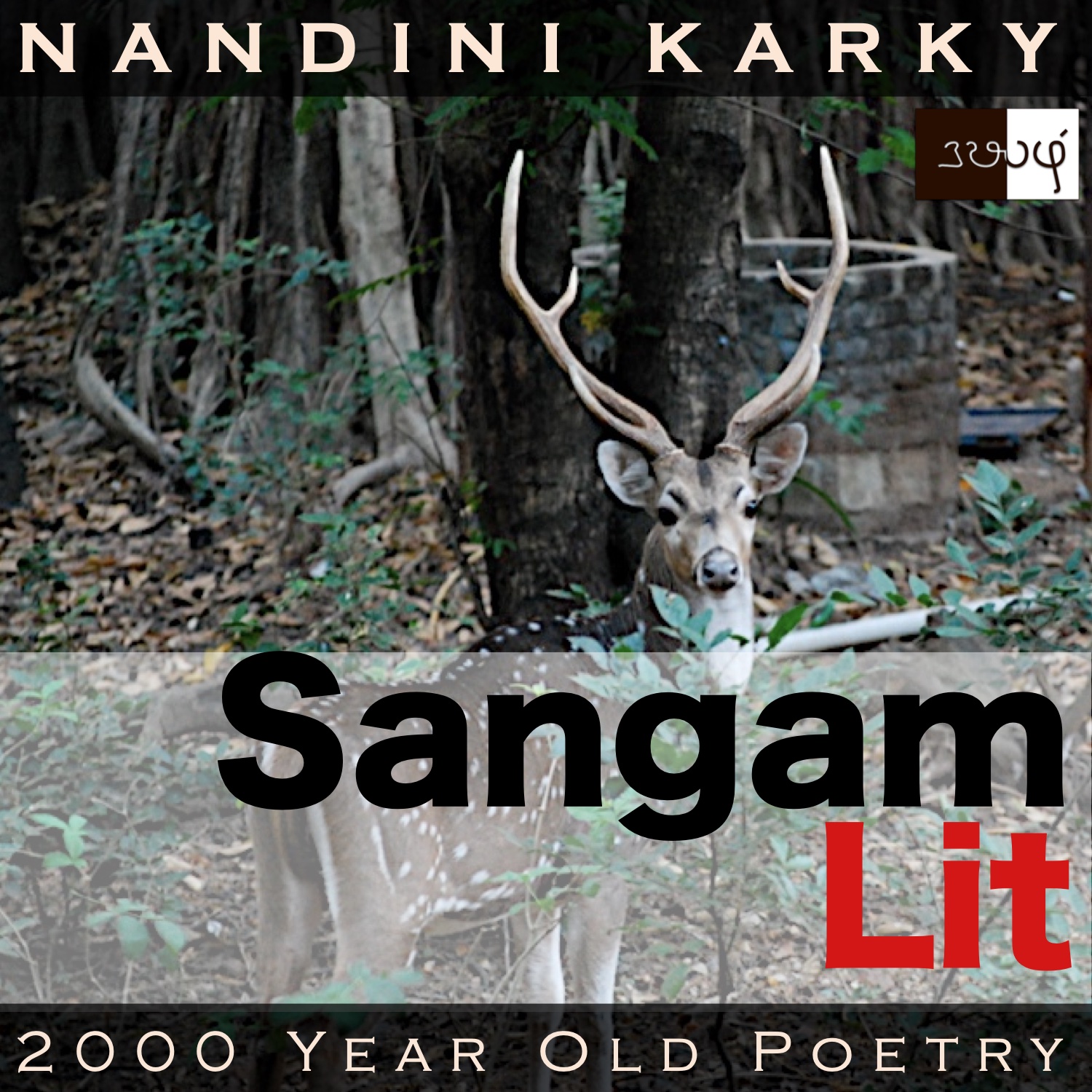Podcast: Play in new window | Download
Subscribe: Apple Podcasts | Spotify | Amazon Music | Android | iHeartRadio | TuneIn | RSS | More

In this episode, we observe the effect of the changing season on nature, as portrayed in Sangam Literary work, Kurunthogai 183, penned by Avvaiyaar. Set in the forest regions of ‘Mullai’, the verse speaks in the voice of the lady to the confidante, in response to the confidante’s worry about the ability of the lady to bear with the man’s parting.
சென்ற நாட்ட கொன்றைஅம் பசு வீ
நம் போல் பசக்கும் காலை, தம் போல்
சிறு தலைப் பிணையின் தீர்ந்த நெறி கோட்டு
இரலை மானையும் காண்பர்கொல், நமரே?-
புல்லென் காயாப் பூக் கெழு பெருஞ் சினை
மென் மயில் எருத்தின் தோன்றும்
புன் புல வைப்பிற் கானத்தானே.
The verse details multiple aspects of how plant and animal life respond to seasonal changes. In the opening words ‘சென்ற நாட்ட கொன்றை’ meaning ‘the golden shower tree in the land he went to’, we glimpse at the first of these elements. ‘பசு வீ நம் போல் பசக்கும் காலை’ meaning ‘when the fresh flower spreads with pallor, just like us’, projects the emotions of humans on a bloom. Animal life makes its presence felt in ‘சிறு தலைப் பிணை’ meaning ‘small headed female’ and ‘நெறி கோட்டு இரலை மானையும்’ meaning ‘the male deer with twisted antlers’. From these animal references, the focus falls once again on a plant in ‘புல்லென் காயா’ meaning ‘a dull Ironwood tree’. An exquisite sight greets us in ‘மென் மயில் எருத்தின் தோன்றும்’ meaning ‘appears like a peacock’s soft neck’. Ending with the words ‘புன் புல வைப்பிற் கானத்தானே’ meaning ‘in the jungles near the dryland’, the verse welcomes us to explore the landscape.
Flowers of many hues, deers and peacocks frolic in this verse. The context reveals that the man and lady were leading a married life when the man departed on a mission. In his absence, the lady languished and observing this, the confidante expresses words of worry about how the lady will bear with his parting. To her friend, the lady says, “In the land he departed to, at the time when fresh flowers of the ‘kondrai’ will be covered in pallor of pining, as I am, will my man see a male deer with winding antlers, separated from its small-headed mate, as he is? Will this happen in the jungles near the drylands, where the listless kaya tree transforms with many a flower-brimming huge branch that appear like a peacock’s soft neck?” With these words, the lady expresses her belief that the man will find his way back to her soon.
What gives the lady such confidence? Let’s follow her words closely to find out. She transports us to the land, which the man is traversing in his journey, and here, she points in particular to a golden shower tree, which is in full bloom in the rainy season. This sight she compares to how pallor is spreading on her skin, which tells us that losing the sheen of their dark skin and becoming pale or even golden was not a welcome happening. This change to fair skin was considered a symptom of disease. When you consider the modern obsession with fair skin prevalent in Tamil circles today, indeed times have changed since the Sangam era! Returning, the lady has mentioned this blooming of golden shower tree to indicate it’s the season of rains, and she asks whether at this time there is any possibility of the man seeing a male deer separated from its female, just the way he is separated from the lady. This is a rhetorical question and she means ‘No, he won’t’. It’s the season of togetherness and the man is sure to come across sights with male and female deers cuddling each other, the lady implies.
In the first reference to the golden shower tree, the lady revealed the ‘when’. The ‘where’ is revealed by the next reference to the ‘Ironwood tree’, which was recently looking listless, but now suddenly, its flowers have bloomed, making its branch appear like a peacock’s neck, in the jungles near the drylands, where the man was walking. On searching more about this tree and its flowers, I learnt about its unique purple-blue flowers, which incidentally have the same shape of the coronavirus. Also learnt that the tree blooms just once or twice a year and just then, makes its own branches and its surroundings glow with the fluorescence of its hues. And, it’s the colours in this sight the lady precisely equates to the shades on a peacock’s neck.
Now we understand that the lady has mentioned these different sights to say the man too will be seeing these changes around him and his heart would no doubt turn homeward to the lady, making him hurry back to her. At the core of this verse, is the lady’s faith that the man too will feel what she feels within. Transforming that trust into an object, the lady wraps it in the brilliant golden and purple hues of nature, decorating it with images of deers in love, and hands over this picturesque gift for generations to savour!




Share your thoughts...